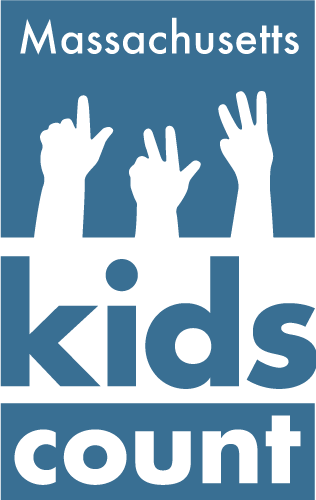The House Ways and Means (HWM) budget proposal for Fiscal Year 2022 (FY 2022) goes further than the Governor’s proposal in many ways — such as public school funding — but does not reflect the level of need communities are continuing to face because of the COVID-19 pandemic.
The state budget is a powerful tool to create equitable communities. After decades of underfunding, the state now has an opportunity to use billions of federal dollars to help pull us out of the pandemic and build towards a racially and economically just recovery.
Below are two key takeaways from the HWM budget for FY 2022, highlights from some budget areas, and a full table of funding by category.
1) Much of the action is happening off-budget
A common refrain for the FY 2022 budget debate will be that what is funded in the state budget gives an incomplete picture.
Indeed, a lot of the federal COVID aid to Massachusetts has not and will not show up in the state budget. A large portion of the billions of dollars coming to the state goes directly to local governments and other entities.
From an accountability perspective, when funding is spent off-budget (outside of the state’s operating budget) it is also more difficult for advocates to know exactly how much money schools, child care centers, housing providers, and other entities are receiving. Lawmakers can say that federal relief is filling the gaps left by the state budget but, unless there is a transparent and user-friendly account of where all the funds are going, it is difficult for communities to know.
About $4.5 billion of relief is coming to the state budget from the American Rescue Plan (ARP). State house leaders said they will wait until June to come up with a plan for that money, following guidance from the U.S. Treasury Department.
This means the plan for this $4.5 billion (will we use it for child care, housing, or something else? Which communities will get priority?) might be laid out in a supplemental budget process. Supplemental budgets — which add more funds to state services — occur in separate legislation from the overall operating budget. Supplemental budgets can be less predictable and less open, making it more difficult for communities to advocate for their needs.
Lawmakers could instead hold a statewide public engagement process to ask communities how these federal funds could help support an equitable recovery.
Further, the federal relief is one-time money and, once it is gone, the state will need to make sure it has ongoing resources to fill that gap.
Read more about the American Rescue Plan and about prior federal relief.
2) The HWM budget does not reflect the ongoing reality for many
While the crisis may not look as dire as last year, many in our communities are still facing profound challenges as a result of the COVID-19 pandemic and the HWM budget for FY 2022 does not reflect that. In most areas, HWM budget proposes either cuts or the same level of funding as the current fiscal year.
For instance, the HWM is proposing a 17 percent cut ($121.5 million less) in housing while an estimated 33,000 Massachusetts renter households had an average rental debt of $6,000 as of December. The state said in early April that renters requesting assistance are on average four to five months late on rent. Federal funds will be essential for addressing this key need, but state funding is critical to make sure that all residents can remain safely and stably housed. An updated report by City Life/Vida Urbana also has shown that in Boston, eviction filings have disproportionately hit communities of color.
In early education, one in six spots in child care centers had not reopened by February 2021 compared to pre-pandemic times. The sector overall lost $750 million in revenue during the shutdown and still is contending with higher costs because of the pandemic.
The HWM proposes an 11 percent cut ($100.7 million less) in early education compared with the current fiscal year. Even with additional aid from the federal government — $176 million from the previous packages and an expected $511 million from ARP — the sector will need more funding to both weather the crisis and make transformative investments in our children. Continued underfunding of child care affects not only children, but also parents trying to return to work and the economy overall.
This modest funding of state services is coming at a time when the revenue picture is looking much less dire than predicted, thanks to large infusions of federal relief and better-than-expected state tax collections so far.
Holding back on much-needed, transformative investments can result in more instability for those hit hardest by the pandemic.
Below are highlights from some revenue and spending areas.
Tax Revenue
- The state needs a plan to generate more revenue for the coming years since the federal COVID relief is one-time money. Some communities have experienced decades of underfunding. Meanwhile, some people and corporations in the state have benefitted from substantial and unequal growth in wealth and income. During this time of need there is an opportunity to look to those who have reaped the economic benefits of the pandemic to contribute more towards the overall wellbeing of the Commonwealth. Eliminating costly corporate tax breaks could generate millions to support crucial state services.
- HWM allows a $1.875 billion draw from the state’s savings account, the Rainy Day Fund. Because of better-than-expected tax collections and federal relief, the state may not need much or any of this proposed amount.
- Through March, FY 2021 tax collections were $1.45 billion ahead of expectations. The current estimated tax revenue for FY 2022 is more than $1 billion behind pre-pandemic times.
- The FY 2022 Consensus Revenue Estimate (CRE) is $30.12 billion.
- The FY 2020 CRE was $31.151 billion.
- HWM proposes hitting pause on the start of a state charitable deduction, saving $64 million in FY 2022. This is good, because the charitable deduction overwhelmingly benefits high-income households.
K-12 Schools
- The HWM has said it would like to get back on track in implementing the Student Opportunity Act (SOA) — a law to overhaul public school funding and ensure that all children can access great education wherever they go. Implementation was delayed by a year because of the pandemic.
- The HWM proposes $60 million more than the Governor does for FY 2022. But the HWM proposal falls short in two ways:
- The HWM proposal ($5.543 billion) is $90 million short of what it would take to stay on track with the SOA. This is because of the school enrollment numbers used by the HWM budget. School funding is dictated by enrollment numbers and the HWM uses enrollment numbers from pandemic times — when parents were homeschooling children or putting them into private schools. Enrollment during the pandemic was about 32,000 less than the year before and most students are expected to return to public school.
- The HWM proposal puts $40 million into a reserve account that schools will have to apply for. The application process for this funding has not yet been published, but school administrators already face many challenges and adding an application process could disadvantage the resource-strapped schools that need this funding most. Including the funding into the public school funding formula will better allow superintendents to plan for the coming year.
MassHealth
- MassHealth enrollment has grown significantly in the past year, but the cost to the state will be less than expected in January due to federal COVID relief.
- Because of enhanced federal reimbursement, the net programmatic cost of MassHealth in HWM is about $8.51 billion, $38 million less than the anticipated net cost of the Governor’s budget proposal, after accounting for federal funds.
- While the state of emergency remains, the federal government will continue to provide a 6.2 percentage point increased reimbursement for MassHealth.
- By March, 2 million people were covered by MassHealth — 725,000 of these are children.
- During the state of emergency and in order to keep receiving the extra federal reimbursement, MassHealth has discontinued its eligibility reviews. Once the state of emergency ends though, and MassHealth resumes this practice, there may be disruptions for families who lose this health coverage.
Funding by category
| Budget by Category and Subcategory ($ millions) | FY 2021 GAA* | FY 2021 Current** | FY 2022 Governor | FY 2022 HWM |
|---|---|---|---|---|
| Education | 9,317.2 | 9,399.7 | 9,389.1 | 9,619.2 |
| Early Education & Care | 852.3 | 904.2 | 775.2 | 803.5 |
| Higher Education | 1,349.8 | 1,359.4 | 1,315.5 | 1,384.7 |
| K-12: Chapter 70 Aid | 5,283.7 | 5,283.7 | 5,481.3 | 5,543.2 |
| K-12: Non-Chapter 70 Aid | 849.8 | 871.0 | 802.8 | 873.5 |
| K-12: School Building | 981.6 | 981.6 | 1,014.3 | 1,014.3 |
| Environment & Recreation | 251.8 | 259.0 | 243.5 | 249.1 |
| Environment | 115.7 | 121.7 | 108.8 | 110.0 |
| Fish & Game | 32.9 | 33.0 | 32.2 | 33.7 |
| Parks & Recreation | 103.3 | 104.3 | 102.5 | 105.4 |
| Health | 22,837.4 | 22,973.5 | 22,166.2 | 23,559.1 |
| MassHealth (Medicaid) & Health Reform | 19,441.4 | 19,494.7 | 18,766.8 | 20,122.1 |
| Mental Health | 931.6 | 932.0 | 943.9 | 944.9 |
| Public Health | 787.1 | 805.5 | 725.9 | 762.5 |
| State Employee Health Insurance | 1,677.3 | 1,741.3 | 1,729.7 | 1,729.7 |
| Human Services | 5,161.4 | 5,193.1 | 5,184.5 | 5,302.8 |
| Child Welfare | 1,084.1 | 1,084.2 | 1,087.7 | 1,090.1 |
| Disability Services | 2,233.6 | 2,234.1 | 2,360.6 | 2,395.2 |
| Elder Services | 581.7 | 582.8 | 577.8 | 607.1 |
| Juvenile Justice | 174.5 | 174.5 | 169.1 | 169.1 |
| Transitional Assistance | 738.4 | 757.8 | 726.6 | 769.1 |
| Other Human Services | 349.1 | 359.8 | 262.8 | 272.4 |
| Infrastructure, Housing & Economic Development | 2,754.7 | 2,904.6 | 2,652.9 | 2,671.8 |
| Commercial Regulatory Entities | 90.4 | 90.7 | 90.0 | 91.4 |
| Economic Development | 302.4 | 352.9 | 212.8 | 238.1 |
| Housing | 607.4 | 705.8 | 545.5 | 584.3 |
| Transportation | 1,754.6 | 1,755.2 | 1,804.7 | 1,758.2 |
| Law & Public Safety | 3,242.1 | 3,277.9 | 3,283.0 | 3,291.1 |
| Courts & Legal Assistance | 893.2 | 912.7 | 897.3 | 919.7 |
| Law Enforcement | 459.8 | 461.4 | 475.4 | 471.1 |
| Prisons, Probation & Parole | 1,608.9 | 1,614.4 | 1,634.9 | 1,615.4 |
| Prosecutors | 204.4 | 211.8 | 204.5 | 210.0 |
| Other Law & Public Safety | 75.8 | 77.6 | 70.9 | 74.9 |
| Local Aid | 1,181.9 | 1,183.1 | 1,224.0 | 1,217.8 |
| General Local Aid | 1,128.6 | 1,128.6 | 1,168.1 | 1,168.1 |
| Other Local Aid | 53.3 | 54.4 | 55.9 | 49.7 |
| Other | 6,485.9 | 6,871.3 | 6,836.9 | 6,861.9 |
| Constitutional Officers | 95.9 | 99.4 | 82.9 | 86.6 |
| Debt Service | 2,686.6 | 2,686.6 | 2,745.5 | 2,769.8 |
| Executive & Legislative | 82.9 | 83.0 | 82.9 | 82.9 |
| Libraries | 33.9 | 34.0 | 33.9 | 36.3 |
| Pensions | 3,115.2 | 3,115.2 | 3,422.6 | 3,422.6 |
| Other Administrative | 471.5 | 853.1 | 469.1 | 463.8 |
| Total Budget | 51,232.5 | 52,062.1 | 50,980.2 | 52,772.9 |
NOTE: MassBudget is awaiting clarification on a few questions, which may change the MassBudget adjustments to HWM totals for Pensions, State Employee Health Insurance, and MassHealth.
* “GAA” stands for General Appropriation Act, which is the adopted budget.
** “Current” includes the final, adopted budget any supplemental budgets, Prior Appropriations Continued (PACs), or 9C funding cuts.





